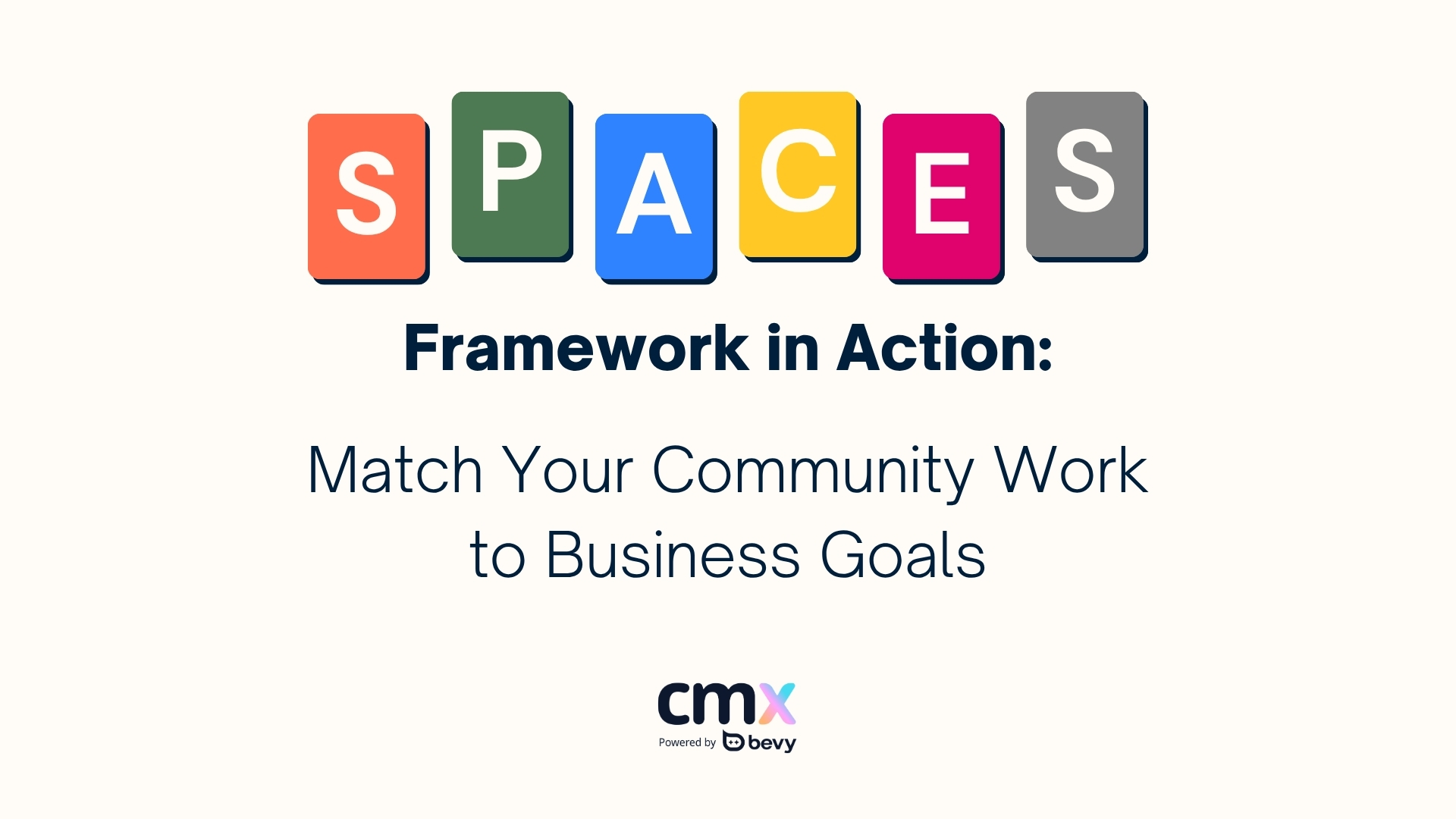Inspired by the 2025 Community Industry Report + CMX Strategy Frameworks
One of the most common questions community professionals face is: “What’s the business value of this?”
It’s a fair question. And in the 2025 CMX Community Industry Report, it remained one of the top frustrations. Proving ROI. Getting buy-in. Justifying budget. These are the conversations that show up again and again. But here’s the thing: the value is already there—you just need the right framework to surface it.
That’s where SPACES comes in.
At CMX, we use the SPACES Model to help community professionals map their work directly to business outcomes. The 2025 report shows that this kind of clarity is more important than ever. Community teams are lean, expectations are high, and executives want to see results.
So let’s walk through how to apply the SPACES Model to your work—and use it to get the visibility, budget, and support your community deserves.
What is the SPACES Model?
SPACES is a framework designed by CMX to help community builders categorize the business objectives their work supports. Each letter represents a different value pillar:
- Support: Members help each other solve problems, reducing support costs
- Product: Members share feedback and ideas to improve the product
- Acquisition: Community attracts and converts new users or customers
- Content: Members create helpful content that boosts SEO or drives engagement
- Engagement: Community increases loyalty and retention
- Success: Community drives customer education and satisfaction
It’s a simple model—but behind it is a powerful mindset shift. Instead of asking “How do I justify our community?” you're asking “Which business goal is our community already impacting?”
What the 2025 Report Tells Us
Download the 2025 CMX Community Indusutry Trends Report
The most common top business objectives among respondents were:
- Customer/user support: 24%
- Customer/user success: 22%
- Acquisition/marketing: 20%
- External engagement/retention: 19%
- Content creation: 6%
- Product feedback: 6%
In other words, most communities are driving value through support, success, acquisition, and retention—the “big four” pillars that matter to almost every business. Yet only 24% of respondents said they can confidently quantify the value of their community. That means a lot of teams are doing the work but don’t yet have the structure to show it.
How to Apply SPACES to Your Community
Start with a simple exercise. Grab a whiteboard (or a Notion doc) and write out each of the six SPACES pillars. Then, for each one, ask:
- Are we doing anything in this area?
- What evidence do we have of success?
- What metrics are we already tracking—or could start tracking?
Here’s what that might look like:
Support
Do your members help each other in forums or Slack?
Can you track answered questions or deflected support tickets?
Could you partner with the support team to measure impact?
Product
Are you collecting feedback or ideas from members?
Do you run beta groups or user interviews?
Could you tag suggestions that made it into the product?
Acquisition
Do new members discover you through community events or content?
Can you track community-sourced leads or referrals?
Is marketing using any community stories or case studies?
Content
Are members writing tutorials, sharing use cases, or generating UGC?
Are blog posts or help center articles coming from your community?
Could you track engagement or SEO lift from this content?
Engagement
Are community members more likely to renew, upgrade, or stay?
Can you track retention rates or customer health scores by community activity?
Could you connect NPS scores with community participation?
Success
Are you running onboarding programs, office hours, or education series?
Do customers who engage with community report higher satisfaction?
Can you measure success using feedback surveys or CSAT?
You don’t need to hit all six pillars. In fact, we suggest you don’t. One or two is more than enough to start. What matters is tying what you're already doing to outcomes your stakeholders care about.
A Real-World Example
Let’s say your community runs a weekly Q&A thread where users help each other troubleshoot. That’s Support. You could partner with your support team to calculate how many tickets that thread prevents—reducing costs and improving time to resolution.
Or maybe you host virtual product roundtables and collect feedback that leads to new feature ideas. That’s Product. You could create a slide in your roadmap deck showing how many improvements came directly from community suggestions.
Small adjustments in how you track and report on these efforts can unlock huge opportunities for internal recognition and investment.
What You Can Do Today
If you’re trying to get buy-in, build a business case, or just get clear on where to focus—SPACES is a great place to start. It helps you stop chasing vanity metrics and start aligning your work with strategy.
Try this:
- Choose your top one or two pillars based on what you’re already doing
- Identify one metric that ties to each
- Track and report that metric consistently
- Share a monthly update with stakeholders (even informally)
This doesn’t require a new tool. It just requires intentionality.
Final Thought: You’re Already Creating Business Value
The SPACES Model doesn’t tell you to reinvent the wheel. It helps you see the wheel for what it is—and show others why it matters. If you’re building community, you’re already driving business outcomes. Your job now is to translate that impact into a language your leadership understands. The clearer your narrative, the more support you’ll earn.
Download the full 2025 CMX Community Industry Report for more data, frameworks, and real-world insights to help you build smarter, stronger communities.








.svg)



.svg)

